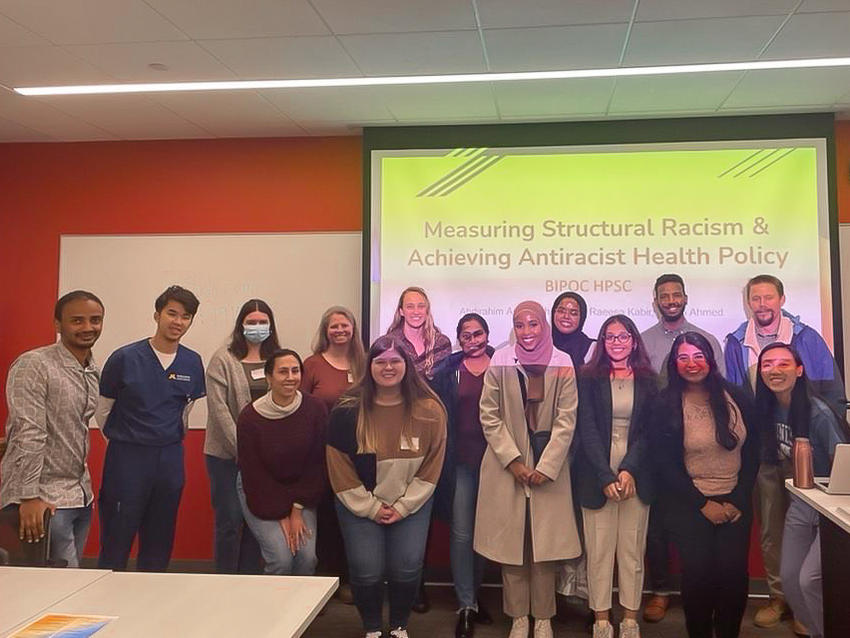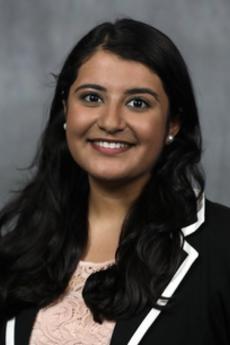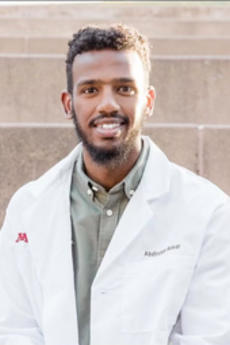Dental students lead interprofessional session on structural racism and healthcare

Two learners represented the School of Dentistry at a recent interdisciplinary conference on campus, exploring racism and justice in healthcare.
Ishita Aghi, DDS ’23, and Abdirahim Askar, DDS ’25, are board members of the BIPOC Health Professionals Student Leadership Collective, an organization that creates space for Black, Indigenous and People of Color (BIPOC) health professional learners to collaborate, gather with one another and seek out ways of enhancing equity and justice in healthcare.
Aghi, who has been involved with DEI subcommittees at the School of Dentistry since their creation in 2020, was thrilled to serve on the board, where she currently sits as co-chair. “It seemed like a great way to combine my interests and meet other health professionals interested in creating more opportunities for BIPOC-related events,” she explained. “I’ve enjoyed helping expand BIPOC HPSC’s reach and engagement across interprofessional schools.”
Askar, similarly, had a desire to “be an asset and help make change through an interprofessional organization” whose vision he shares. “It has been an incredible experience thus far working with other health professional students to bring light to some of the health disparities faced by people of color.”
As part of their board service, Aghi and Askar co-presented at the 2022 Health Professionals Leadership Conference, Who Gets to Shape History?: Rethinking Healthcare's Past and Building an Equitable Future, sponsored by the Center for Health Interprofessional Programs.
Aghi and Askar led a breakout session entitled Measuring Structural Racism and Achieving Antiracist Health Policy. Informed by an article from Rachel Hardeman, PhD, MPH, Associate Professor and Blue Cross Endowed Professor of Health and Racial Equity in the School of Public Health, the duo co-led a discussion of antiracism in health policy through the context of the Rondo neighborhood in St. Paul, Minnesota. They were joined by two additional co-presenters, one from the Medical School and another from the School of Public Health.
“We created an interactive learning environment to highlight the key findings of Hardeman’s paper,” Askar explained. “To enhance engagement, we created a case study using the construction of I-94 to allow participants to collaborate and simulate what might have been done differently.”
The session was enlightening and engaging—for the presenters and the participants. “Before creating this case study, I wasn’t personally familiar with the lasting impacts the construction of I-94 had on the Rondo community,” Aghi reflected.
Moreover, the experience opened up new avenues of thinking through complex problems. “Each profession approaches topics from a different perspective, so it was great to interact with and learn from different healthcare professionals,” Aghi explained. “Presenting with interactive techniques such as word maps, case studies and group exercises led to a meaningful discussion.”
Askar agreed, citing one of his favorite parts of the day as “engaging with the different groups in our breakout and hearing their different perspectives and knowledge.”
Both presenters hope the experience opened new horizons for participants and encouraged them to think of the lasting impacts and unintended consequences of structural racism.
“I hope our presentation helped participants understand the complexity of measuring structural racism and its impact on health outcomes, as well as why those measurements are necessary,” said Askar.
Aghi hopes this presentation is just the beginning for attendees. “I hope more people engage in difficult conversations regarding racism in healthcare,” she said. “These issues are complex, and there is no simple solution, but getting the conversation started is a big step in making tangible changes.”

